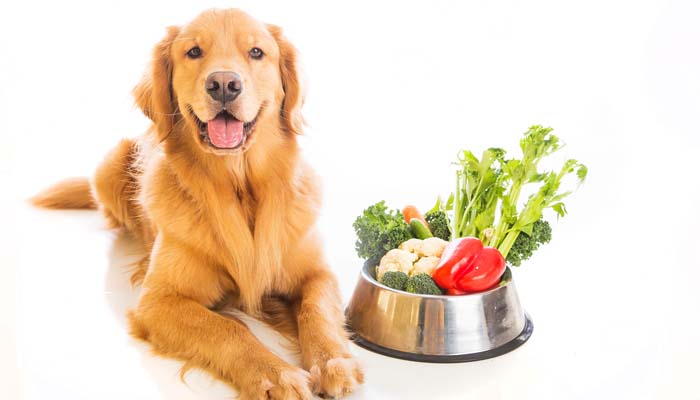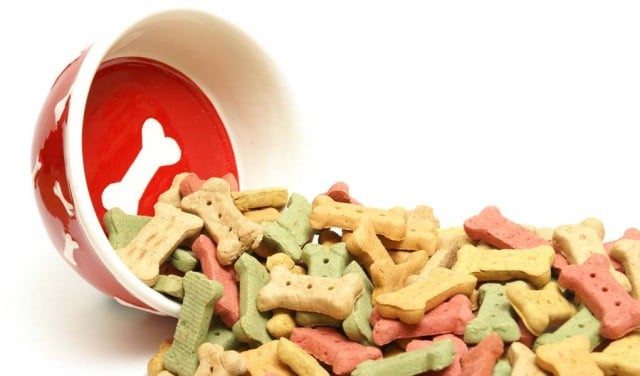
Table of Contents
Trying to decide which is the healthiest dog food for your pooch is a bit of a minefield.The first thing to bear in mind is that the best choice for your dog ultimately depends on his individual needs. Puppies require a different balance of nutrients to ageing dogs, and those with special conditions like diabetes or arthritis may benefit from a change in diet or additional supplements.
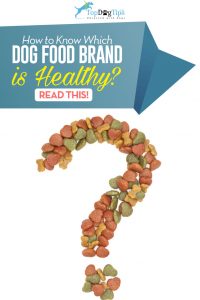 The best way to learn about the different diets available and the ideal choice for your pet is to speak with your veterinarian.
The best way to learn about the different diets available and the ideal choice for your pet is to speak with your veterinarian.
Your vet knows your dog's entire health history. He or she will be able to give you the best advice as to which dog food will meet your dog's individual needs.
The brand and formula that you select will change as your dog ages. Selecting the healthiest dog food needs to be an issue that you revisit regularly. As your dog ages and as his health needs change, you'll need to change his diet to meet his nutritional needs.
For example if you adopt a puppy, he'll need a special diets while his body growing, a new diet when he hits adulthood and a change in his nutrition when he becomes a senior dog.
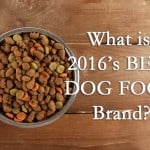 For more detailed information on the healthiest dog food, be sure to read our in-depth review of the best dog food brand. It includes picks for the best dry kibble, canned dog food, holistic and organic foods and the best choice for puppies.
For more detailed information on the healthiest dog food, be sure to read our in-depth review of the best dog food brand. It includes picks for the best dry kibble, canned dog food, holistic and organic foods and the best choice for puppies.
How to Know Which is the Healthiest Dog Food?
You need to tailor your dog’s diet to four main things: his age, his activity levels, his ideal weight and any health conditions he may have. But for all dogs, there are some standard things to look for, and that’s where we’re here to help!
RELATED: The Best Dog Food Storage for Pet Food's Safety
Reading the Label
Dog food manufacturers are required to label ingredients in descending order. The first ingredient on the list is the one in highest proportion. As a general rule, you want this first ingredient to be an animal protein.
RELATED: How to Read Dog Food Labels
Watch out for labels with lots of ingredients though. For example a label might read: beef, ground whole grain corn, corn meal, soybean meal, ground wholegrain wheat, etc.
Although each separate ingredient is guaranteed to be less than the beef, the total of the filler ingredients might add up to more.
Ideally you want to choose a food with protein and good carbohydrates like vegetable sources in the first three or four ingredients on the list. Some things you should be looking for on the dog food label are:
Animal Protein
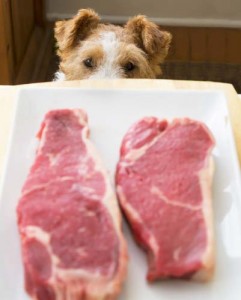 You want to choose a dog food high in protein from meat, as dogs would naturally choose. Look for chicken, turkey, beef, lamb and other quality protein sources. Protein provides essential amino acids, and every protein source varies in its availability – how easily it can be broken down and the amino acids utilized by your dog’s body.
You want to choose a dog food high in protein from meat, as dogs would naturally choose. Look for chicken, turkey, beef, lamb and other quality protein sources. Protein provides essential amino acids, and every protein source varies in its availability – how easily it can be broken down and the amino acids utilized by your dog’s body.
RELATED: 4 Different Types of Dog Food and Which One to Pick?
Some proteins are healthier than others. Egg is the most biologically available, while common dog food ingredients like meat meal and bone meal have far less nutritional value than the meat itself.
An adult dog requires about 18% protein from their food intake, so roughly a fifth of all they eat should be a good source of animal protein.
Fruit and Vegetable Carbohydrates
Look for complex carbohydrate ingredients like sweet potatoes, squash, peas, pumpkin, beetroot and berries. Try to avoid foods with a high proportion of grains like wheat and corn in the first ingredients on the label. These are simpler carbohydrates and are higher in calories.
Good Fats
Not all fat is bad! A small amount of fat from sources like fish oils will provide omegas 3 and 6 which help keep your dog’s joints and eyes healthy, especially as they age. These good fats will also give him a glossy coat a healthy skin.
Adult dogs need about 10 – 15% of their food to be comprised of fats.
Healthiest Dog Food for Puppies
Puppy food is formulated specifically for growing dogs and its ingredients provide double the daily nutritional requirements compared to adult dog food. Puppies need more protein than adults to help them grow – about 28% of their intake.
RELATED: 59 Most Popular Puppy Food Brands
The healthiest dog food for puppies will contain higher levels of protein and some additional vitamins and minerals not typically found in adult food.
It’s best to feed your puppy either an all-dry diet or a diet comprised of mostly dry kibble. This is because dry foods are more calorie dense and contain much higher levels of protein than wet foods do. Moist dog food also has much higher water density and less nutritional value.
RELATED: Adopting a Puppy? You Will Need These Puppy Training Supplies
Kibble is also great for keeping a growing pup’s little gnashers nice and clean. However, if your pup prefers the addition of a little bit of wet food with their kibble, that’s okay too! Small amounts of wet food may be a good idea as well if you live in a hotter climate as your dog will get extra hydration from the food.
Healthiest Food for Adult Dogs
For healthy and active adult dogs, the main thing to be aware of is ensuring that they are getting a balanced diet full of all the vitamins and minerals they need. Check that the food has a statement of nutritional adequacy – a seal of approval from the American Feed Control Officials that declares the food is suitable for adult maintenance.
RELATED: 5 Best Healthy Dog Treats
Some brands may also be labelled ‘suitable for all life stages’, and contain extra nutrients for healthy growth. If your dog is overweight, opt for a food only labelled with ‘adult maintenance’ to keep the calories down.
Calorie requirements change depending on your dog’s age and activity level. Ask your vet how many calories your dog requires and check the label on the food to make sure you’re not overfeeding. If possible, try to find a brand that lists calories in terms of weight as opposed to volume, (choose ounces or grams instead of cups) as it’s far more accurate.
If you’re using kibble, weigh out the appropriate amount into a tin or tub and portion that off for the day, that way even if you accidentally give your pooch a little too much at breakfast, they’ll have a smaller dinner to balance it out.
Remember, it only takes a few extra calories per day for the weight to start adding up, and obesity can have lots of health implications for dogs.
RELATED: Dog Food for Dogs with Diabetes: What You Need to Know
Your dog’s calorie needs will vary according to his activity level too, so calculate his daily requirements if that changes. Many people will find that their dogs are naturally less active during the winter, so you may need to cut down his food just a little. Regularly weigh your pooch to keep on top of any sneaky weight gain.
Pregnant and Lactating Dogs
Mother dogs need much more protein in their diet while pregnant and nursing. Check with your vet for recommendations on the healthiest dog food for your pregnant or nursing female to see whether supplements or a change in regular food will suit her needs best.
Health Issues
Some health issues will affect the dietary needs of your pooch. Dogs with arthritis or joint issues may need supplements, diabetic dogs may need higher protein foods to stabilize their blood sugar levels, and ailing pets often benefit from more protein to help them heal.
It’s always best to discuss your dog’s diet changes with the vet who’s treating them as they will know what’s best for their patient.
It’s important to remember that all dogs are individuals, and it’s natural to find that sometimes even the best foods won’t suit your one of a kind pooch. It’s quite normal to find you may have to shop around a little before finding the perfect menu. The good news is that once you do find the ideal meal plan, most dogs are quite happy to eat the same thing every day until their needs change at a later stage.
Lastly, if you’re considering changing your dog’s food, always do this gradually. Start off by mixing about 10% of the new food in with their usual diet. If they do well with that, you can increase the ratio over a period of a week or two until they are no longer eating their old food.
To recognize when a food suits your doggy, check for good digestion, a glossy coat, bright eyes and lots of energy.




